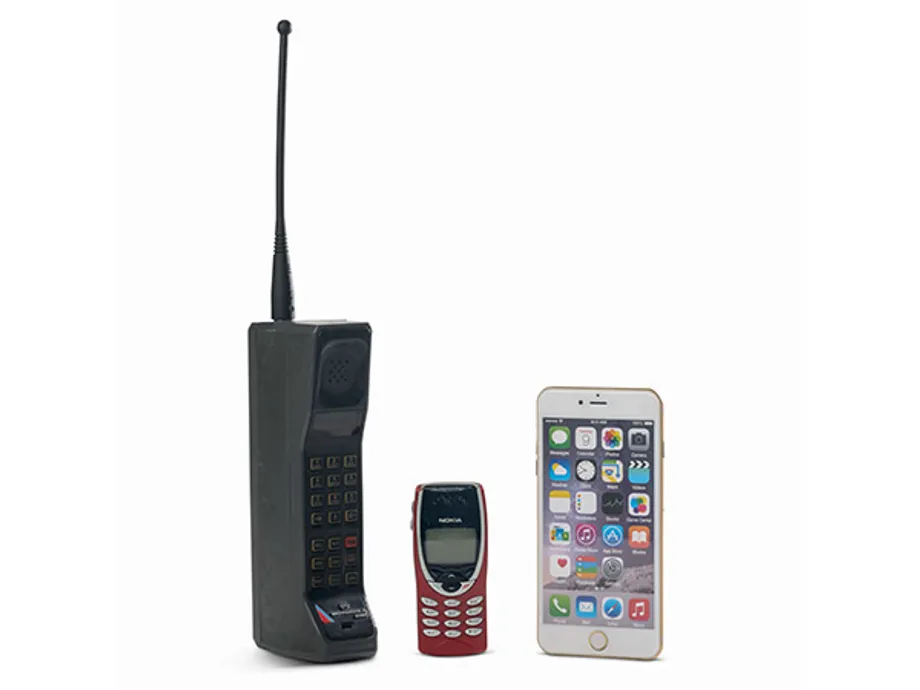Mobile telephony
Mobile telephony is the provision of telephone services to phones which may move around freely rather than stay fixed in one location.
Mobile phones connect to a terrestrial cellular network of base stations (cell sites), whereas satellite phones connect to orbiting satellites. Both networks are interconnected to the public switched telephone network (PSTN) to allow any phone in the world to be dialled.
Three mobile phone variants
The worlds first handheld mobile phone was the Motorola DynaTAC 8000x, nicknamed the brick due to its resemblance to a clay-fired brick. It was sold in the US from 1983, originally costing $3,995.
It was followed in the UK in 1986 by the 8000s and in 1988 by the first phone displayed here, the 8500x. The second phone is a Nokia 8210, released in 1999. It was then Nokias smallest and lightest phone and could be customised with different coloured covers. The third phone is a model of Apples iPhone 6, released in 2014.
Donated by UCL

